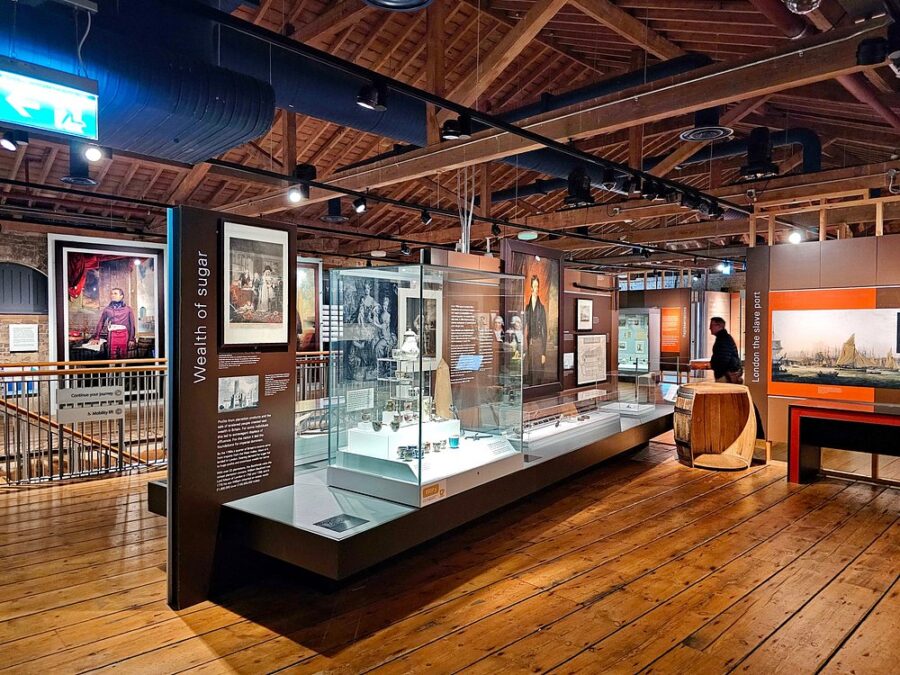
Museum of London Docklands
Table of Contents
- History and Significance
- Main Attractions and Activities
- London, Sugar & Slavery
- Sailortown
- Docklands at War
- Mudlarks & the River Thames
- Family Activities
- Visitor Experience
- Tips for Visitors
- Accessibility and Facilities
- Unique Features
- Overall Impressions
- Pros and Cons
- Pros:
- Cons:
- Should You Go?
- Location
- Places to Stay Near Museum of London Docklands
- Find and Book a Tour
- Explore More Travel Guides
History and Significance

Let’s get one thing straight—this isn’t your typical glass-cased, yawn-inducing museum. Housed in a 200-year-old sugar warehouse, the Museum of London Docklands has grit in its foundations. Literally. The building once stored Caribbean sugar, a grim reminder of London’s ties to the transatlantic slave trade. Today, it tells the story of how the Thames shaped London, from Roman trading post to the world’s busiest port.
Opened in 2003, this museum is the sibling of the Museum of London (the one near St. Paul’s), but with more saltwater in its veins. It’s a place where history isn’t polished for tourists—it’s raw, complex, and sometimes uncomfortable. And that’s exactly why it’s worth your time.
Main Attractions and Activities
London, Sugar & Slavery
The museum’s most powerful exhibit. It doesn’t shy away from Britain’s role in the slave trade, using ledgers, personal accounts, and even the building’s history to confront the past. Walking through, you’ll see how sugar—something so ordinary now—was once drenched in suffering. It’s not an easy section, but it’s necessary.
Sailortown
Ever wondered what life was like for a 19th-century sailor? This immersive recreation of a dockside street—complete with smoky tavern sounds and creaky floorboards—gives you a taste (and smell) of the chaos. Peek into a sailor’s lodging house and try not to wince at the “bed” (a rope hammock shared with strangers).
Docklands at War
A hidden gem. Most people think of the Blitz as bombs over central London, but the docks were pummeled too. This exhibit shows how the East End kept working amid the rubble, with personal stories that stick with you. (The audio clips of dockworkers? Chilling.)
Mudlarks & the River Thames
Forget TikTok—Victorian mudlarks were the original scavengers, picking through the Thames mud for scraps to sell. This exhibit displays some of the weirdest things pulled from the river: Roman shoes, Tudor rings, even human bones. Makes you think twice about that nice Thames walk.
Family Activities
Surprisingly kid-friendly. The “Harbour Master’s Office” lets little ones play at loading cargo, while regular storytelling sessions bring history to life. (Pro tip: Check the website for pirate-themed events—they’re a riot.)
Visitor Experience
Here’s the thing: this museum doesn’t feel like a museum. The industrial bones of the warehouse—exposed brick, wooden beams, uneven floors—give it an edge most cultural spots lack. You half-expect a dockworker to barrel around the corner.
It’s also blissfully uncrowded. Unlike the British Museum’s mosh pits, you can linger here. Take the third-floor balcony: one of London’s best free views of Canary Wharf’s skyscrapers looming over old docks.
But—and this is key—read the plaques. This isn’t a place for passive scrolling. The real gold is in the details: the 18th-century merchant’s rant about lazy workers, the smuggler’s hollowed-out shoe, the WWII love letters found in a dockyard desk.
Tips for Visitors
-
Free, But Donate: Entry is free, but toss £5 in the box. This place runs on goodwill.
-
Start on Top: Take the lift to the 3rd floor and work down—it’s chronological that way.
-
Comfy Shoes: Those warehouse floors are hard. Your feet will know it by noon.
-
Combine with a Walk: Pop over to Wapping’s old pubs or Canary Wharf’s dockside art afterward.
-
Avoid Mondays: Some interactive bits close for maintenance.
Accessibility and Facilities
-
Wheelchair-Friendly: Lifts to all floors, though some doorways are narrow.
-
Baby Changing: Available (because history waits for no diaper).
-
Café: Decent sandwiches, but Wilkinson’s café next door does better coffee.
-
Lockers: Free, but bring a £1 coin (you get it back).
Unique Features
Why this museum over others?
-
The Building Itself: You’re standing in a piece of history—those wooden pillars? Original.
-
Unflinching Stories: It tackles slavery, poverty, and war without sugarcoating.
-
The Thames Foreshore Display: Actual 2000-year-old rubbish that tells a story. (Who knew oyster shells could be so fascinating?)
Overall Impressions
This isn’t a “fun day out” museum. It’s a “think deeply about London’s soul” museum. Some exhibits will unsettle you. Others will make you laugh (looking at you, 18th-century rat trap). But you’ll leave seeing the Thames—and this city—differently.
Pros and Cons
Pros:
- Free (but worth donating)
- Raw, unfiltered history
- Stunning warehouse setting
- No crowds—blissful for London
Cons:
- Some interactive bits occasionally closed
- Not much for thrill-seekers
- Café could be better
Should You Go?
Yes, but with the right mindset. Come for:
-
A break from London’s tourist crush
-
Stories that most museums gloss over
-
That eerie moment when you realize your phone is still in your pocket because you forgot to check it for an hour.
And if nothing else, you’ll never look at a sugar cube the same way again.
Location
Places to Stay Near Museum of London Docklands
Find and Book a Tour
Explore More Travel Guides
No reviews found! Be the first to review!